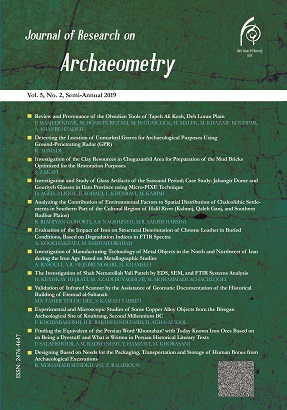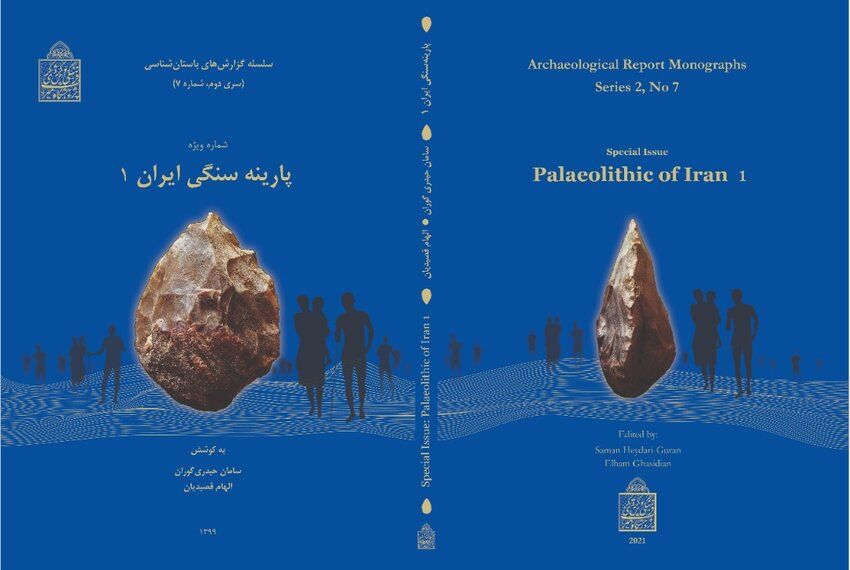Publications so far
0
| 1. |  | Hariri, Nemat; Rezalo, Reza; Zadeh, Ardeshir Javanmard; Heydari-Guran, Saman: Correlation of the Epipaleolithic Period in the West-Central Zagros and North Zagros with Climatic Events after the Last Glacial Maximum (LGM). In: Journal of Research on Archaeometry, iss. 7, no. 1, pp. 205-29, 2021. (Type: Journal Article | Abstract | Links | BibTeX)@article{nokey,Up to now, two areas of northern and west-central Zagros Mountains (ZM) have produced better information concerning the development of techno-typology of lithic artefacts during the Epipaleolithic period (EP) compare to the other part of this region. Although several caves and rockshelters associated with EP deposits are found in this region (Map 1), but they were not subject to study for the relationship between climate effect on cultural developments like the neighbored area of Levant. this deficiency can be attributed to a) the low number of excavated sites, b) poor stratigraphic control, and c) the lack of a sufficient number of absolute dates. Recent absolute date achievements from the EP site of Palegawra cave [17]. locates on the northern ZM alongside Paleoclimatic reconstruction in Hashilan wetland [8] based on the palynological studies have improved our understanding from Epipaleolthic cultural and environmental events for the region. |
| 2. |  | Heydari-Guran, Saman; Douka, Katerina; Higham, Thomas; Münzel, Susanne C.; Deckers, Katleen; Hourshid, Shaghayegh; Naderi, Rahmat; Asiabani, Samran; Ghasidian, Elham: Early Upper Palaeolithic Occupation at Gelimgoush Cave, Kermanshah; West-Central Zagros Mountains of Iran. In: Journal of Archaeological Science: Reports, iss. 38, 2021. (Type: Journal Article | Abstract | Links | BibTeX)@article{nokey,The timing and dispersal routes of Homo sapiens (H. sapiens) into the Iranian Plateau have always been a matter of debate in the recent years. Current studies on the Upper Palaeolithic period of the Zagros mountains demonstrated the later colonisation of West-Central Zagros by H. sapiens based on techno-typological and radiocarbon dating. The Kermanshah region is one of the main concentrations of Palaeolithic sites in the West-Central Zagros mountains. Despite presenting rich Palaeolithic sequence records, it suffers from the lack of stratified data associated with chronological control. This issue, until now, has prevented us from evaluating and knowing how these archaeological records relate to the patterns of H. sapiens dispersal and colonisation into the West-Central Zagros mountains. Here, we present the first excavated and dated Palaeolithic site in Kermanshah. Eshkaft-e Gelimgoush Cave yielded a classic Upper Palaeolithic assemblage, representing the Lorestan and Kermanshah (LaK) cultural group documented in the West-Central Zagros. Radiocarbon dates, associated with the material culture from this cave, provide the first dated stratified Upper Palaeolithic evidence in Kermanshah. The data from Eshkaft-e Gelimgoush are consistent with the cultural diversity model among the Upper Palaeolithic populations in the Zagros and confirm later colonisation of the West-Central than northern and southern Zagros mountains. |
| 3. |  | Heydari-Guran, Saman; Ghasidian, Elham: Special Issue: Paleolithic of Iran 1. In: Archaeological Report Monographs Series, iss. 2, no. 7, 2021. (Type: Journal Article | BibTeX)@article{nokey, |
2021 |
|
 | Hariri, Nemat; Rezalo, Reza; Zadeh, Ardeshir Javanmard; Heydari-Guran, Saman: Correlation of the Epipaleolithic Period in the West-Central Zagros and North Zagros with Climatic Events after the Last Glacial Maximum (LGM). In: Journal of Research on Archaeometry, iss. 7, no. 1, pp. 205-29, 2021. (Type: Journal Article | Abstract | Links | BibTeX | Tags: Palaeolithic, Zagros)@article{nokey,Up to now, two areas of northern and west-central Zagros Mountains (ZM) have produced better information concerning the development of techno-typology of lithic artefacts during the Epipaleolithic period (EP) compare to the other part of this region. Although several caves and rockshelters associated with EP deposits are found in this region (Map 1), but they were not subject to study for the relationship between climate effect on cultural developments like the neighbored area of Levant. this deficiency can be attributed to a) the low number of excavated sites, b) poor stratigraphic control, and c) the lack of a sufficient number of absolute dates. Recent absolute date achievements from the EP site of Palegawra cave [17]. locates on the northern ZM alongside Paleoclimatic reconstruction in Hashilan wetland [8] based on the palynological studies have improved our understanding from Epipaleolthic cultural and environmental events for the region. |
 | Heydari-Guran, Saman; Douka, Katerina; Higham, Thomas; Münzel, Susanne C.; Deckers, Katleen; Hourshid, Shaghayegh; Naderi, Rahmat; Asiabani, Samran; Ghasidian, Elham: Early Upper Palaeolithic Occupation at Gelimgoush Cave, Kermanshah; West-Central Zagros Mountains of Iran. In: Journal of Archaeological Science: Reports, iss. 38, 2021. (Type: Journal Article | Abstract | Links | BibTeX | Tags: Kermanshah, Palaeolithic, Zagros)@article{nokey,The timing and dispersal routes of Homo sapiens (H. sapiens) into the Iranian Plateau have always been a matter of debate in the recent years. Current studies on the Upper Palaeolithic period of the Zagros mountains demonstrated the later colonisation of West-Central Zagros by H. sapiens based on techno-typological and radiocarbon dating. The Kermanshah region is one of the main concentrations of Palaeolithic sites in the West-Central Zagros mountains. Despite presenting rich Palaeolithic sequence records, it suffers from the lack of stratified data associated with chronological control. This issue, until now, has prevented us from evaluating and knowing how these archaeological records relate to the patterns of H. sapiens dispersal and colonisation into the West-Central Zagros mountains. Here, we present the first excavated and dated Palaeolithic site in Kermanshah. Eshkaft-e Gelimgoush Cave yielded a classic Upper Palaeolithic assemblage, representing the Lorestan and Kermanshah (LaK) cultural group documented in the West-Central Zagros. Radiocarbon dates, associated with the material culture from this cave, provide the first dated stratified Upper Palaeolithic evidence in Kermanshah. The data from Eshkaft-e Gelimgoush are consistent with the cultural diversity model among the Upper Palaeolithic populations in the Zagros and confirm later colonisation of the West-Central than northern and southern Zagros mountains. |
 | Heydari-Guran, Saman; Ghasidian, Elham: Special Issue: Paleolithic of Iran 1. In: Archaeological Report Monographs Series, iss. 2, no. 7, 2021. (Type: Journal Article | BibTeX | Tags: Palaeolithic)@article{nokey, |
